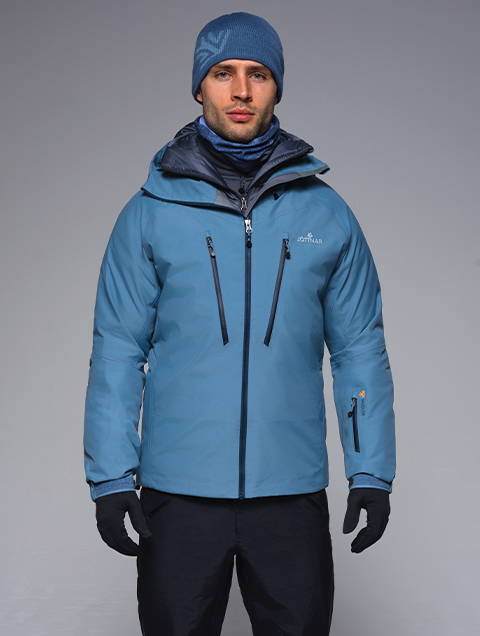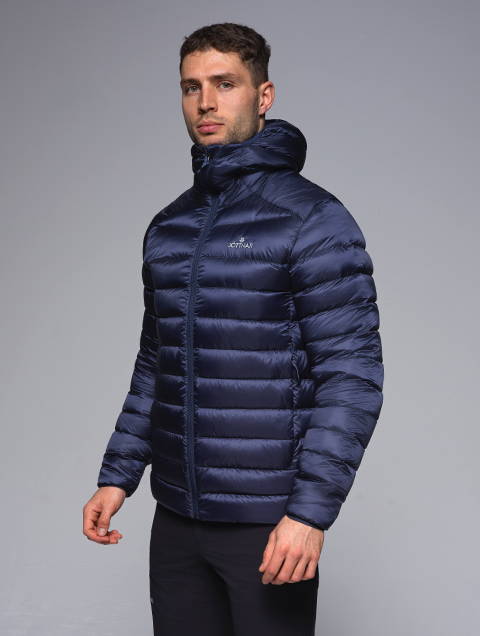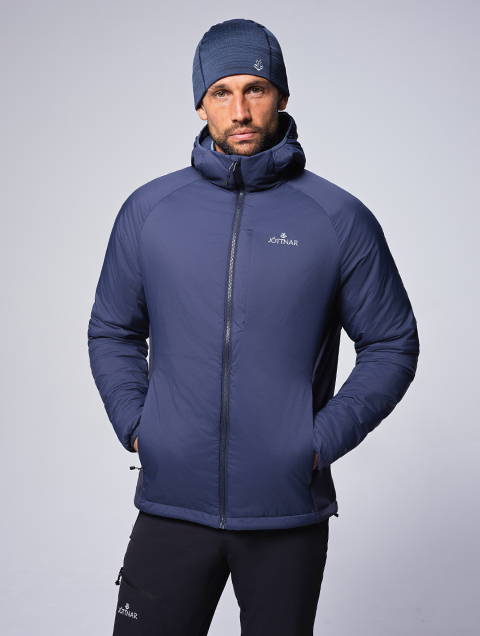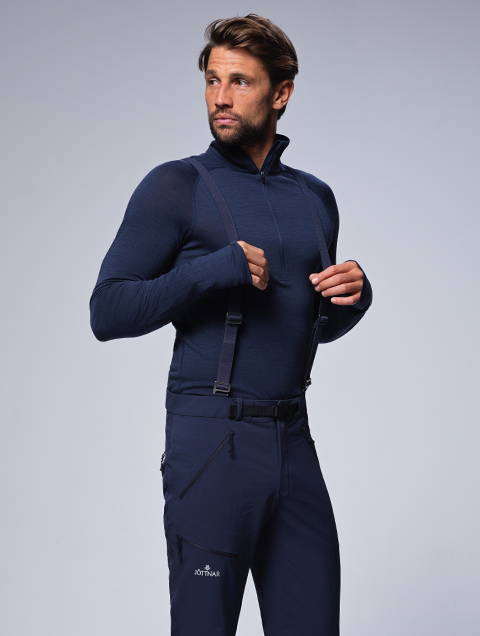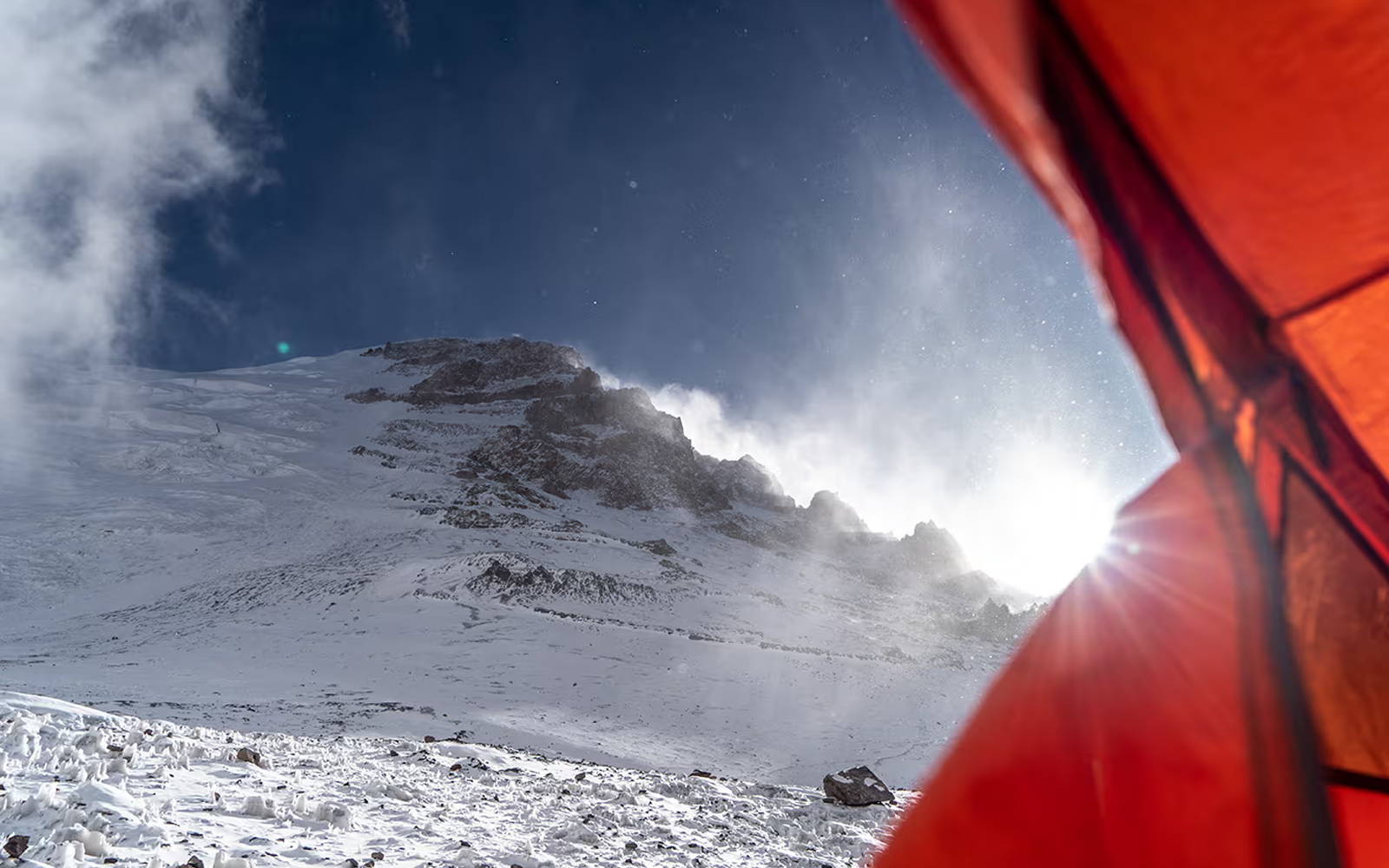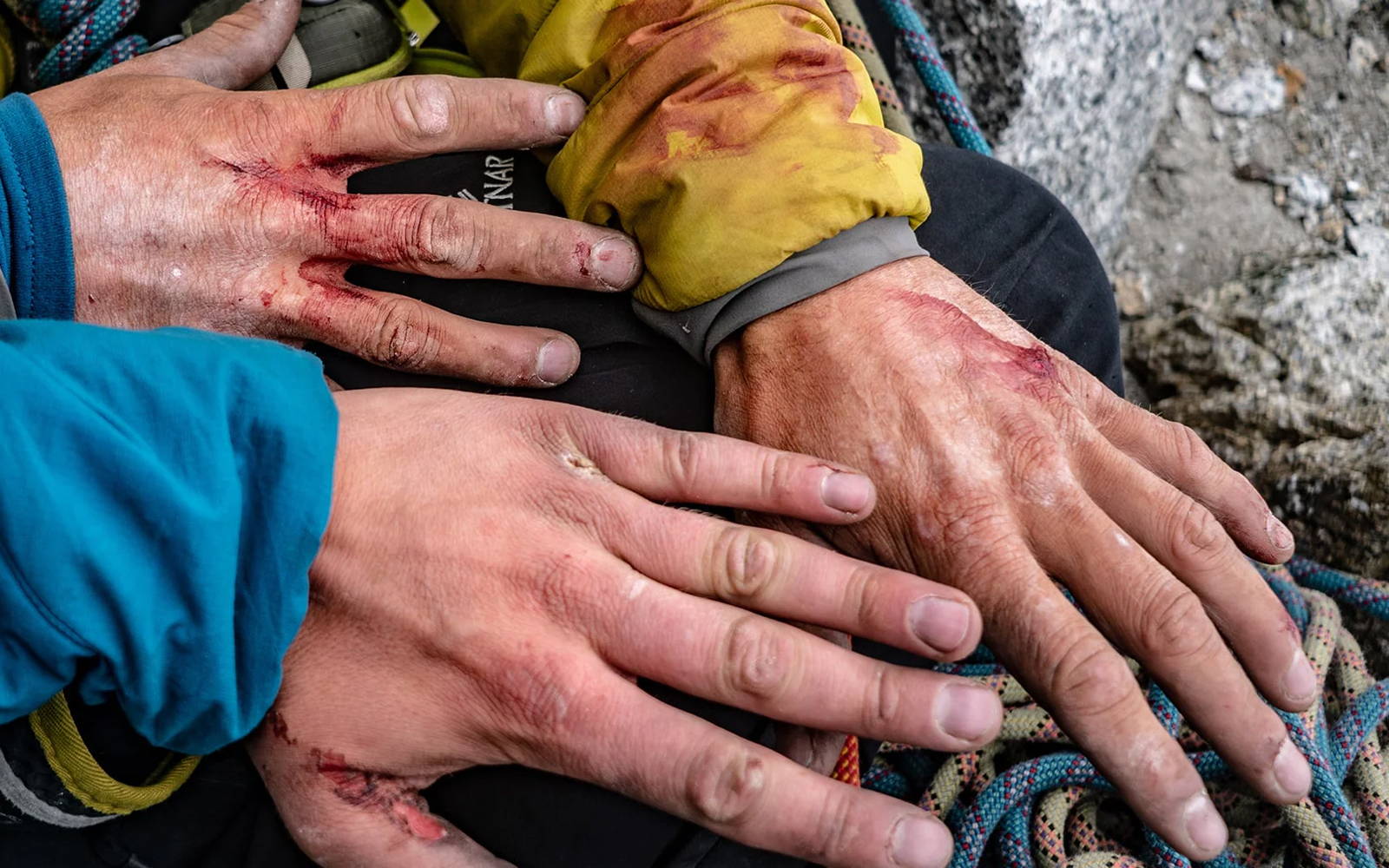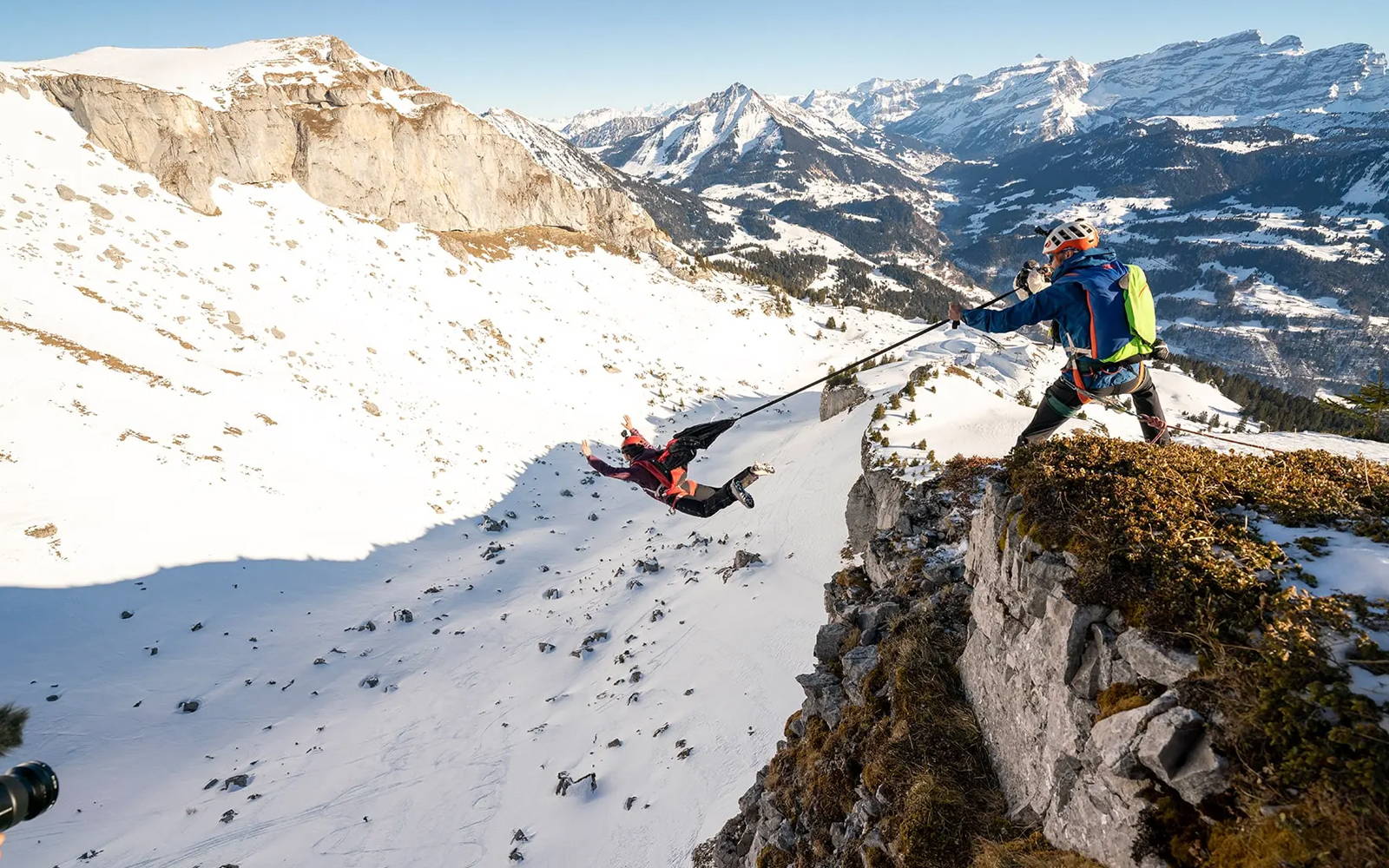
After more than a decade climbing in the Alps, the Himalaya were finally calling. It was time to take my experience to high altitude...
A couple of previous high altitude expeditions had given me some knowledge of what climbing at altitude was like, giving me valuable lessons about expedition life.
We needed an objective. Something with a hook. The longest flight? The highest... most remote? These are all feats that I would one day look to achieve, but for this expedition, we had our sights set on Laila Peak; the most beautiful.
It's a subjective opinion, but few could deny that Laila Peak is not a beautiful mountain. The summit so sheer. We were sure to find a jump spot if we made it to the top.
"Intrigued by the foreigners using these mountains in a way he had not seen before."

"Intrigued by the foreigners using these mountains in a way he had not seen before."

A steep chossy gully gave access to the snowline. By now acclimatized, we pressed upwards in search of a suitable exit point to BASE jump from, and which would allow a flight back down to base camp under canopy. It would be a warm-up jump without the wingsuit but a chance for us to get a first flight in Pakistan.
After Scotty and Maria had jumped, I was left on the mountainside alone. Looking down at the tiny tents at base camp. The canopies still left open while Maria and Scotty stood to watch me jump. Opening a new exit is always intimidating. The implications of flawed judgment are serious. Whether that is ability or calculations. I try to err on the side of caution.
But in the end it’s trust in yourself and others around that sets in motion that leap into the void. My toes were curled over the edge of the rock, a precise placement to make sure I didn’t slip. Even alone, I counted down from three. My muscle memory of a thousand jumps, I leapt out without hesitation.
The snap of the canopy opening was life affirming. A huge sail above my head, decelerating my fall to earth. I now needed to calculate the landing to avoid the boulder field and crevasses, and then the mess tent. Ahkbar had left his kitchen tent momentarily to watch us jump. Intrigued by the foreigners using these mountains in a way he had not seen before.
Ahkbar worked as a chef in Karamabad, and during his two weeks of annual leave had taken to the mountains to work even more. He missed his family but provides for them well. And now, doing this work, he gets to experience the mountains. The glacier is his fridge freezer, the melt water stream his sink, and a drystone wall keeps his livestock close by.



I came in with speed over the lake.
Aiming to land between the tents, converting speed into a flair to almost stall the canopy. But at this altitude the run-in was still fast, nearly taking out Akhbar. He was so intrigued he forgot to clear the runway! A broad smile erupted on his face. “This is just a warm up.” I told him.
The expedition aim would be to complete a wingsuit flight from the summit, using a specialist suit that gives arm and leg wings. I took it out of my rucksack to show Ahkbar, and told him he must try it on. He was initially nervous to try on the lightweight suit, not wanting to rip the fabric, but then instinctively held the grippers at the end of the arm wings, spreading his legs to apply tension on the leg wing.
It was all intuitive to him - until he started flapping his arms. It might seem the natural thing to do, but the suit flies by pressurising the two layers of fabric via the inlets on the front of the suit, creating an aerofoil during the first few seconds of freefall, and then gaining forward momentum. It always gives me great joy to show people my passion. To explain how this small bit of fabric can bring such incredible and visceral moments. Yet the most devastating tragedies.



Hushe village is the literal end of the road. Our hostel sitting at the start of the track into the Hushe valley. The rooms were each named after famous Pakistan summits, containing what would be our last real beds for the next few weeks.
In the morning the community of porters gathered on the veranda. Nothing but hopeful smiles; everyone there hoping for a chance to haul 25kg to base camp. Fifty-four men from the ages of 16 to 64 were chosen by the head porter. Their names called out one by one. With each name called there was less and less chance they would all be needed.
Amongst this jostling and eager crowd, there was no animosity for the porters who had been chosen. Instead a cheer by their fellow companions. We helped load the porters' metal carrying frames with our kit. Frames that had been welded together with odd and misshapen straps, presumably scavenged from broken rucksacks. I weighed my own rucksack, not wanting to feel like I was paying for the luxury of being pampered, instead wanting to be with them, sharing boiled sweets with the young and old alike. Helping fellow porters across the streams and through the scree slopes.


After a particularly hard moraine crossing, made all the harder by a stubborn goat, I sat next to Mohhamad. We shared a chocolate bar before we helped each other to our feet under the strain of our loads. He looked at mine. “Too heavy, you must be very strong,” he said.
A big part of a mountain objective for me is how it is achieved, and I want to put in as much effort as everyone else.
We aimed to push through Camp 1 and onto our base camp the first day. With rain on the horizon and new shelter at base camp, the porters asked if we could stop at Camp 1. We were more than happy to oblige. They made quick work of putting up the kitchen and mess tents before bringing out the cricket bat. It was a surreal beauty. A perfect mountain cricket pitch. The 6,000-metre peaks the audience looking on, as 20-plus porters enjoyed an idyllic game. They ushered us into their team, including us in their downtime tradition.



After my most comfortable night at altitude, we were ready for the summit push.
2am arrives. I set up the cooker while Maria collected snow to melt. We forced our breakfast down, knowing that even if we were not hungry we would need the energy. 3am and we start the climb. Traversing across the main face on deep soft snow. Charley gave me an anxious look, only a hundred meters in, signalling his concern about the conditions. The 50-degree slope fell away below us, a thousand meters to the Gondogoro glacier. At this early in the morning the snow should be firm...
“This snow feels like midday melt,” Charley said with conviction. Marco seemed determined, however, forging on ahead. An old slough avalanche had uncovered a strip of ice, 50 metres wide. We had only been climbing for an hour and had already been halted by complications. We had not prepared our gear for these sorts of conditions. We were only using lightweight, minimalist gear so as to ultimately fly down with an easily laden wingsuit.
Everything taken up must be flown down with. Our touring axes had no weight to swing into the bullet-hard blue ice. Our crampons designed for snow, not ice, bruised my toes as I kicked forcefully into the glacier.
"The 50-degree slope fell away below us, a thousand meters to the Gorongoro glacier."

"The 50-degree slope fell away below us, a thousand meters to the Gorongoro glacier."

Marco and Dave continued, while I sunk my head into my hands and tried to make a decision. Marco was intent on summiting. Dave was hesitant. But in these situations I often use the mantra:
“When there is doubt, there is no doubt.”
The conflict of what to do should be enough for me to know it's not worth the risk of carrying on. Continuing would have amounted to soloing, owing to our lack of dedicated ice gear, and I could see the route steepen as it neared the summit.
“Come on, let's just go a little further, see if the conditions improve,” Dave said wishfully. I knew he was trying to convince himself as well as me. You can always go a little further until you can climb no more, until you’ve crossed the line of risk you were originally willing to take. But I know from experience that that line moves. Especially when trying to convince yourself it will get better, get safer. I know how easy it is to climb yourself into a dead end.



I stuck my head in the snow, listening to my thoughts and drawing from my experience...
Everything told me not to continue.
The mountain would be there for another attempt on another day. I turned my head to watch the two figures of Marco and Dave slowly climbing out of sight, now finishing the traverse and starting to gain vertical elevation. I hoped they reached the summit, but I was doubtful. Instead of feeling demoralised, however, I took a second to look at my surroundings. To appreciate the moment in time. Halfway up this elegant face of ice and snow, I looked behind me to the distance. An alpine glow lighting up the horizon with the mighty K2 standing proudly. I would not be here if it wasn’t for these intense sports that I enjoy. I wouldn’t get to experience these thoughts and emotions or see these incredible vistas.



Back at high camp, the sun was beating down on our tent. I sat in a t-shirt at 5,000 metres above sea level, which was a bad sign for conditions on the south-facing route. Maria and I processed what in reality would be the end of our expedition, cut short by two weeks. I hoped Dave and Marco had reached the summit, and even if they did, I wouldn’t feel like I’d missed an opportunity. I make decisions in the moment, with the information I have at the time, ultimately having only my experience and knowledge to rely on. I’ve learned to trust and stand by my decisions.
From 300 metres below the summit Marco radioed in. “I can’t go further up, it’s too sketchy.” They were turning back.
The conditions deteriorated the closer they got to the summit. They had found the line they weren't willing to cross. We would welcome that news at camp with a cup of tea. We passed on the message to Ahkbar who was grateful to hear of our progress and also our caution. And in turn, we were grateful to have him at base camp. Someone we could rely on.

I don’t ever feel disappointed when objectives like these go unachieved. Making these decisions is part of the challenge, part of the experience operating in the mountains. I will go back another year. And when we do manage to get the flight, the feeling of accomplishment will be all the more intense. The most beautiful mountain is still awaiting the most beautiful flight.
Tim Howell is a member of the Jöttnar Pro Team. Find out more here.
Photography by Charley Radcliffe.

